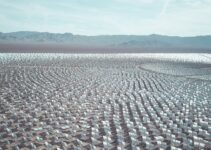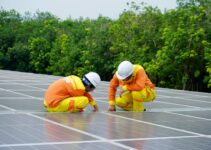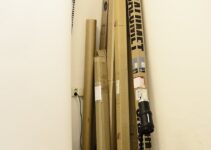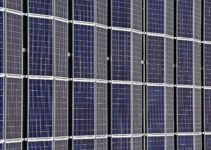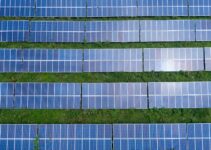Are you interested in reducing your carbon footprint and saving money on your energy bills? Making your own solar panels is a great way to achieve both goals.
In this step-by-step guide, we will walk you through the process of crafting your own solar panels, from understanding the basics of solar energy to maintaining and troubleshooting your homemade solar panels.

Understanding the Basics of Solar Energy
Before you start making your own solar panels, it’s essential to have a solid understanding of how solar energy works. Solar energy is renewable energy derived from the sun’s radiation.
When sunlight hits the solar panels, it is converted into electricity through the photovoltaic effect. This electricity can then be used to power your home or stored in batteries for later use.
Choosing the Right Materials for Solar Panel Construction
Now that you know the basics of solar energy, it’s time to gather the materials needed for your DIY solar panel project. Here are the key components you will need:
- Solar Cells: These are the building blocks of your solar panels. Opt for high-quality, monocrystalline solar cells for maximum efficiency.
- Solar Panel Frame: The frame provides structure and protection for your solar cells. Aluminum frames are commonly used for their durability.
- Junction Box: The junction box is where the electrical connections of your solar panel are made. It ensures the safe and efficient flow of electricity.
- Tabbing Wire and Bus Wire: These wires are used to connect the solar cells and create a series circuit.
- Soldering Iron and Flux: These tools are essential for soldering the electrical connections between the solar cells.
- Solar Panel Encapsulant: The encapsulant is used to seal and protect the solar cells from the elements.
Preparing Your Workspace for DIY Solar Panel Building
Before you begin building your solar panels, it’s important to set up a dedicated workspace. Here are some steps to follow:
- Clean and organize your workspace to ensure you have enough room to work comfortably.
- Gather all the necessary tools and materials and arrange them in an easily accessible manner.
- Ensure proper ventilation in your workspace to prevent the buildup of fumes from soldering and adhesive materials.
- Set up a sturdy workbench or table to assemble your solar panels.
Building Solar Panels: A Comprehensive Walkthrough
Now that you have the necessary materials and a workspace ready, it’s time to start building your solar panels. Follow these steps:
- Prepare the solar cells by cleaning them and removing any protective films.
- Tab the solar cells by soldering tabbing wire to the front and back of each cell.
- Connect the solar cells in series using a bus wire, ensuring a proper electrical connection between each cell.
- Secure the solar cells to the frame using an adhesive or silicone sealant.
- Wire the junction box, connecting the positive and negative leads from the solar cells to the appropriate terminals.
- Seal the solar panel with an encapsulant, ensuring all connections and exposed wires are covered.
Connecting Your DIY Solar Panels to the Power Grid
Once you have completed building your solar panels, the next step is to connect them to the power grid. Here’s what you need to do:
- Contact your local utility company to inquire about their interconnection process and any required permits.
- Install a grid-tie inverter, which converts the DC electricity produced by your solar panels into AC electricity compatible with the power grid.
- Connect the output of the grid-tie inverter to your home’s electrical system.
- Ensure that all electrical connections are secure and follow local electrical codes and regulations.
Maintaining and Troubleshooting Your Homemade Solar Panels
Now that your solar panels are up and running, it’s important to maintain and troubleshoot them regularly. Here are some tips:
- Regularly inspect your solar panels for any signs of damage or wear.
- Clean the surface of the solar panels to remove dirt, debris, and any shading objects.
- Monitor the performance of your solar panels using a solar monitoring system.
- If you encounter any issues, consult the manufacturer’s manual or seek professional assistance.
Frequently Asked Questions about How to Make Your Own Solar Panels
Q: Can I really save money by making my own solar panels?
A: Yes, making your own solar panels can save you money in the long run. While the upfront costs may be higher compared to purchasing pre-made panels, the savings on your energy bills over time can outweigh the initial investment.
Q: How long does it take to build a solar panel?
A: The time required to build a solar panel can vary depending on your experience and the complexity of the design. On average, it can take anywhere from a few hours to a couple of days to complete a solar panel.
Q: Are DIY solar panels as efficient as commercially available ones?
A: DIY solar panels can be just as efficient as commercially available ones if constructed properly using high-quality materials and adhering to best practices. However, it’s important to note that commercially available panels often come with warranties and certifications that DIY panels may lack.
Expert Advice
When it comes to making your own solar panels, it’s crucial to do thorough research and ensure you have the necessary skills and knowledge. If you’re unsure about any step of the process, it’s always best to consult a professional or seek guidance from experienced DIY solar enthusiasts.


